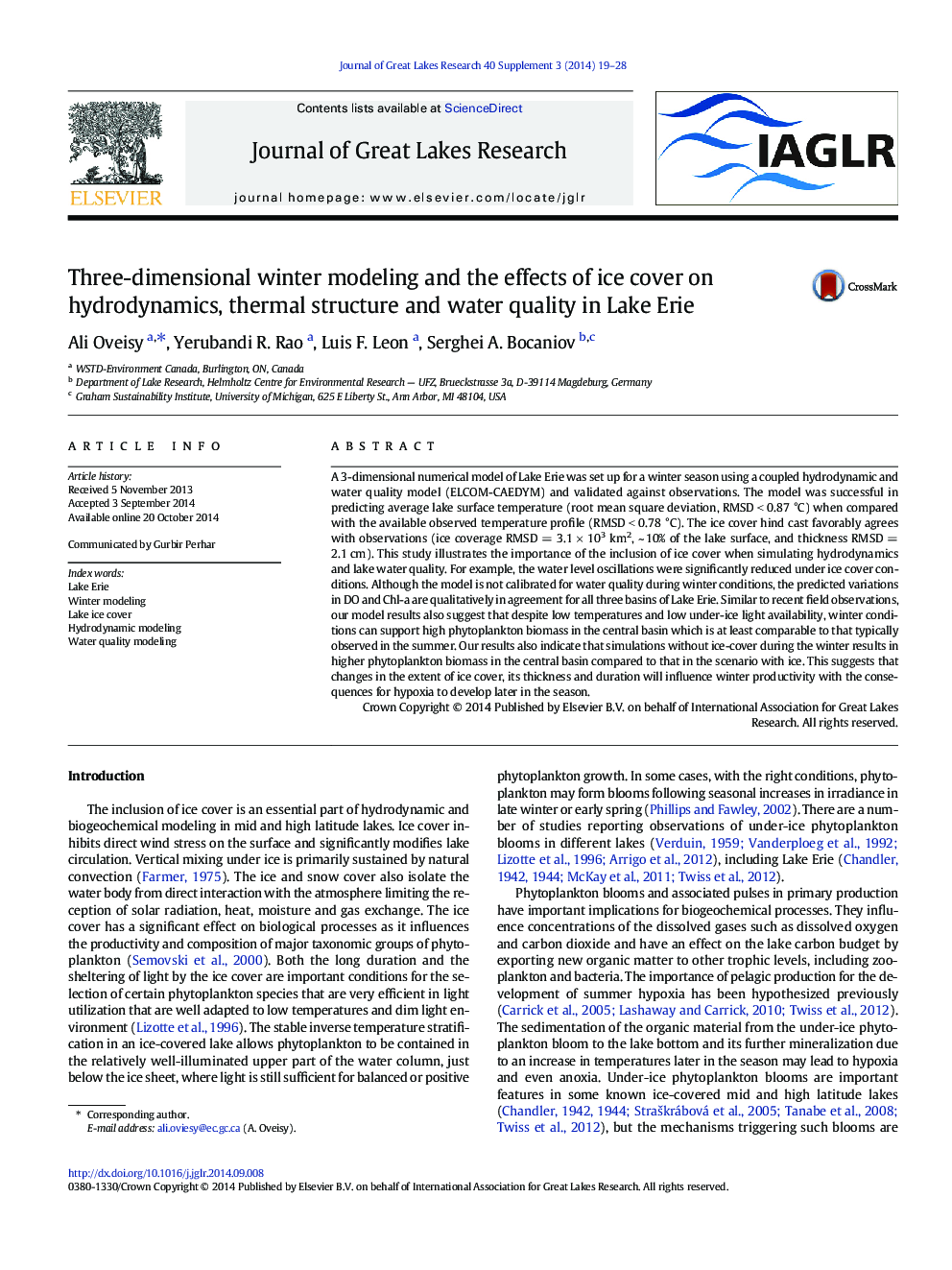| Article ID | Journal | Published Year | Pages | File Type |
|---|---|---|---|---|
| 4398334 | Journal of Great Lakes Research | 2014 | 10 Pages |
Abstract
A 3-dimensional numerical model of Lake Erie was set up for a winter season using a coupled hydrodynamic and water quality model (ELCOM-CAEDYM) and validated against observations. The model was successful in predicting average lake surface temperature (root mean square deviation, RMSD < 0.87 °C) when compared with the available observed temperature profile (RMSD < 0.78 °C). The ice cover hind cast favorably agrees with observations (ice coverage RMSD = 3.1 Ã 103 km2, ~ 10% of the lake surface, and thickness RMSD = 2.1 cm). This study illustrates the importance of the inclusion of ice cover when simulating hydrodynamics and lake water quality. For example, the water level oscillations were significantly reduced under ice cover conditions. Although the model is not calibrated for water quality during winter conditions, the predicted variations in DO and Chl-a are qualitatively in agreement for all three basins of Lake Erie. Similar to recent field observations, our model results also suggest that despite low temperatures and low under-ice light availability, winter conditions can support high phytoplankton biomass in the central basin which is at least comparable to that typically observed in the summer. Our results also indicate that simulations without ice-cover during the winter results in higher phytoplankton biomass in the central basin compared to that in the scenario with ice. This suggests that changes in the extent of ice cover, its thickness and duration will influence winter productivity with the consequences for hypoxia to develop later in the season.
Related Topics
Physical Sciences and Engineering
Earth and Planetary Sciences
Earth and Planetary Sciences (General)
Authors
Ali Oveisy, Yerubandi R. Rao, Luis F. Leon, Serghei A. Bocaniov,
